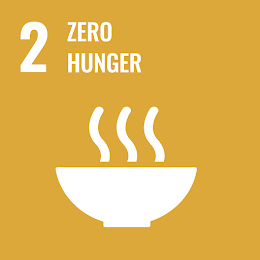Highlight
งานวิจัยพบว่าแบคทีเรียดื้อยาในดินที่มีส่วนผสมของเพอร์ไลต์ไม่ได้มีความสัมพันธ์โดยตรงกับการเลี้ยงสัตว์ แต่เกี่ยวข้องกับคุณสมบัติทางกายภาพและชุมชนจุลินทรีย์ในดิน โดย Bacillus spp. เป็นสายพันธุ์ที่พบมากที่สุดในพื้นที่ศึกษา


ที่มาและความสำคัญ
การใช้ยาปฏิชีวนะในพื้นที่เลี้ยงสัตว์ส่งผลกระทบต่อการเพิ่มจำนวนแบคทีเรียดื้อยาที่ก่อให้เกิดปัญหาด้านสุขภาพสาธารณะ งานวิจัยนี้มุ่งศึกษาแบคทีเรียดื้อยาที่พบในดินที่มีส่วนผสมของเพอร์ไลต์ในประเทศไทย โดยเปรียบเทียบระหว่างพื้นที่ที่ได้รับและไม่ได้รับผลกระทบจากการเลี้ยงสัตว์ ผลการศึกษาพบว่า Bacillus spp. ซึ่งดื้อยาซีเฟพีม (cefepime) เป็นสายพันธุ์ที่พบมากที่สุดทั้งในพื้นที่ที่ได้รับและไม่ได้รับผลกระทบ นอกจากนี้ ยังพบ Bacillus cereus ที่ดื้อต่อยาหลายชนิดในพื้นที่ที่ไม่ได้รับผลกระทบ การศึกษานี้เน้นให้เห็นว่าคุณสมบัติทางกายภาพและชุมชนจุลินทรีย์ในดินมีบทบาทสำคัญต่อการดื้อยาในดินมากกว่าการใช้ยาปฏิชีวนะในสัตว์เลี้ยง
Abstract
Antibiotic resistant bacteria are present in various environments and are concerning for public health. Antibiotic resistance genes in soil may proliferate throughout different ecosystems and be acquired by pathogens that pose health risks to humans and animals. This study investigated the antibiotic resistance of cultivable bacteria isolated from livestock-exposed and unexposed areas in a former perlite mining area in the Fa-La-Mee Mountain range, Lopburi, Thailand. Soil samples were collected in five different locations. Soil bacteria were isolated and tested for susceptibility against seven antibiotics, followed by 16S rRNA gene-based identification. A total of 56 bacterial isolates were isolated from the perlite-rich soil samples, including 34 isolates from the livestock-exposed areas and 22 isolates from the unexposed areas. Most of the isolates were resistant to cefepime (26.5% in exposed areas and 22.7% in unexposed areas) and ampicillin (23.5% in exposed areas and 22.7% in unexposed areas). 16S rRNA gene sequences revealed that most of the resistant bacteria isolated from perlite-rich soil were Bacillus spp. A multidrug-resistant isolate of Bacillus cereus resistant to ampicillin, trimethoprim/ sulfamethoxazole, and cefepime was found in a livestock-unexposed area. The majority of the culturable antibiotic-resistant bacteria isolated from perlite-rich soil were cefepime-resistant Bacillus. Interestingly, the pattern of antibiotic resistance in exposed and unexposed areas was not different, which indicated that antibiotic resistance in perlite-rich soil is likely caused by other factors, such as physicochemical characteristics and/or the microbial population of the soil rather than by antibiotics used in livestock husbandry.
KEYWORDS: Antimicrobial Resistance, Bacillus, Livestock Farming, Perlite
Citation: Leerach, N., Saengchoowong, S., Yurasakpong, L., Samakkan, J., Malaisri, R., Panthukan, A., Jittreethat, N., Hinthong, W., & Premsuriya, J. (2024). Antibiotic susceptibility of bacteria isolated from livestock-exposed and unexposed areas in perlite-rich soil in Thailand. Journal of Pure and Applied Microbiology, 18(3), 2024-2035.
DOI: https://doi.org/10.22207/JPAM.18.3.53
RELATED SDGs:
2. ZERO HUNGER

SDG Goal ที่เกี่ยวข้องอื่น ๆ
6 CLEAN WATER AND SANITATION

ผู้ให้ข้อมูล: อาจารย์ ดร.ลภัสรดา ยุรศักดิ์พงศ์
ชื่ออาจารย์ที่ทำวิจัย: อาจารย์ ดร.ลภัสรดา ยุรศักดิ์พงศ์
Credit ภาพ: อาจารย์ ดร.ลภัสรดา ยุรศักดิ์พงศ์
Webmaster: ว่าที่ ร.อ. นเรศ จันทรังสิกุล
Tags: Antimicrobial Resistance, Bacillus, Livestock Farming, Perlite
